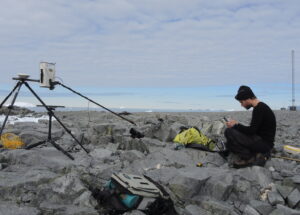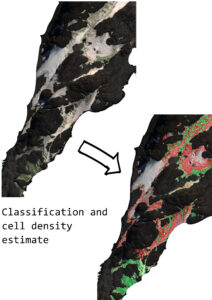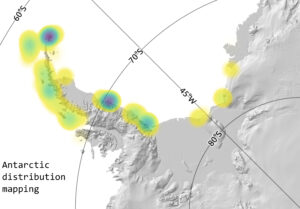Remote sensing uses remote platforms such as Unpiloted Autonomous Vehicles (UAVs), airplanes or satellites to derive information about the world around us. In the context of cryptogam

research, it is beneficial as a method because the vegetation we study is often in hard to access/remote locations, and traditional sampling methods may be destructive.
We start by visiting the field and recording the spectral properties of the species of interest. This information can be used to build classification algorithms that can differentiate vegetation types, or derive estimates of biomass from empirical relationships defined in the field.

Finally, this lets us scale field observations over large areas, using our classification algorithms to identify algal blooms, lichen or other vegetation over landscape scales.

